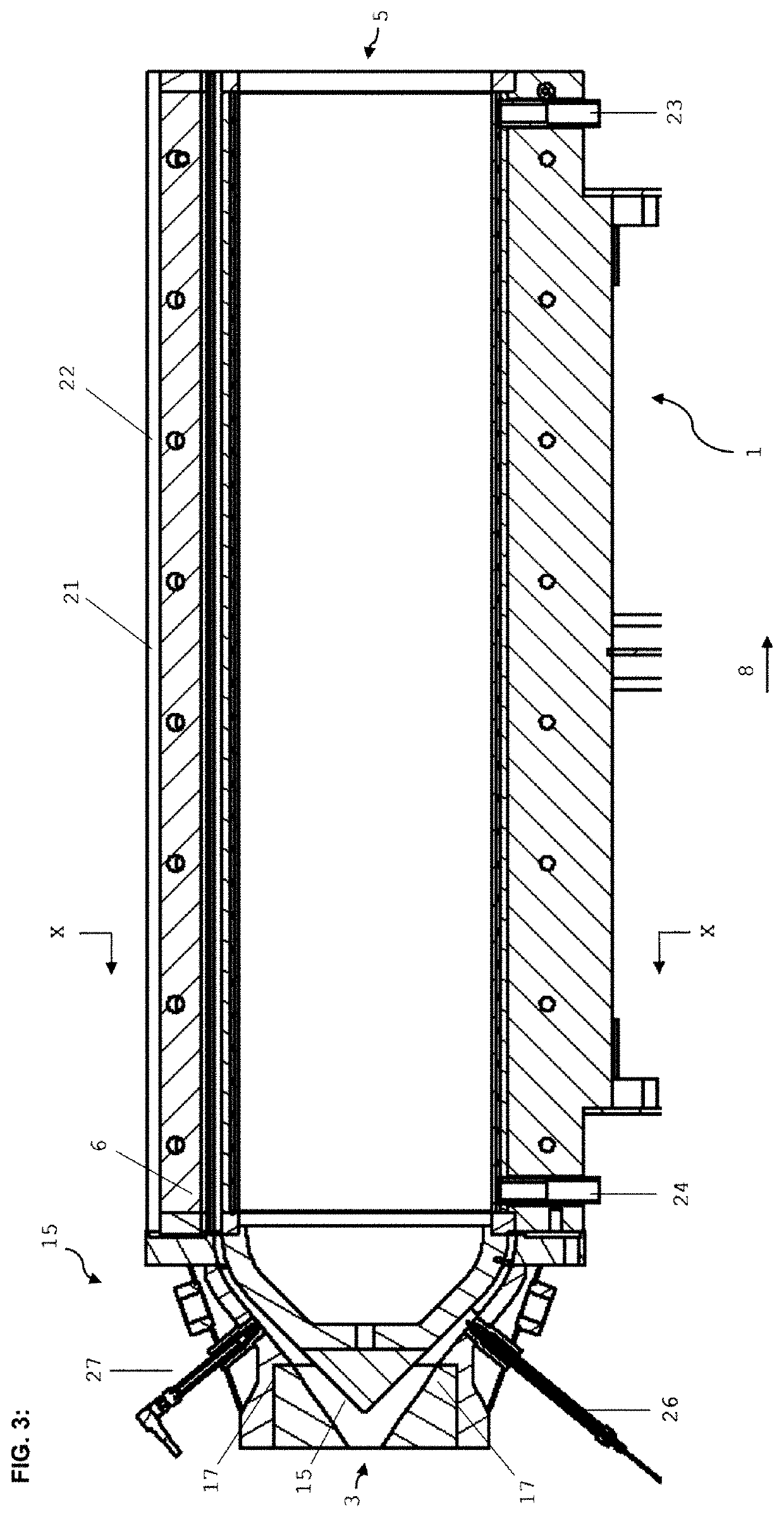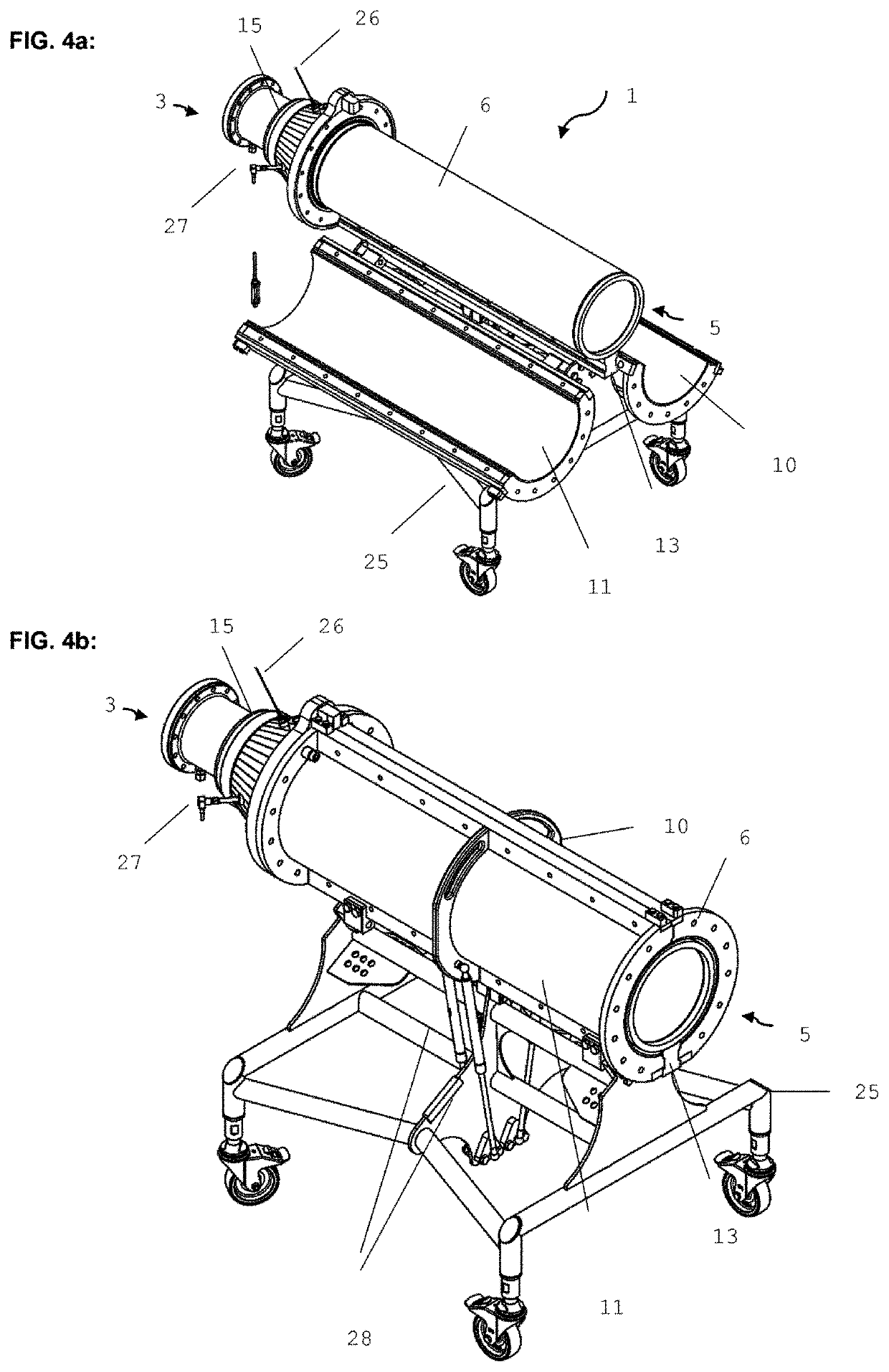Cooling tool for an extruder
a technology of extruder and cooling tool, which is applied in the direction of feeding-stuff, lighting and heating apparatus, applications, etc., can solve the problems of affecting the design of the cooling die, the inability to achieve a fibrous structure, and the inability to achieve a dense, compact, fibrous product structure, etc., and achieves excellent cooling characteristics and simple structure. , the effect of improving the cooling
- Summary
- Abstract
- Description
- Claims
- Application Information
AI Technical Summary
Benefits of technology
Problems solved by technology
Method used
Image
Examples
Embodiment Construction
[0056]FIG. 1 shows schematically an extruder E composed of segments (1-7). A raw material V is introduced via the gravimetric metering system B. Water or steam is introduced via a supply line S. Reference sign 1 denotes the cooling tool. The coolant is preferably introduced at the downstream end of the cooling tool, and discharged at the upstream end of the cooling tool. The flow direction of the coolant is therefore opposite to the flow direction of the extrudate. The coolant temperature can be adjusted (controlled or regulated) by way of a temperature-regulation system; this is illustrated by the controller C. Particularly preferred, the temperature-control system is construed such that expansion of the cooled extrudate can be controlled, and preferably essentially entirely suppressed. However, for certain products it can also be useful and enabled to permit a certain degree of expansion of the cooled extrudate: this can by way of example be desired in the case of products intende...
PUM
| Property | Measurement | Unit |
|---|---|---|
| diameter | aaaaa | aaaaa |
| diameter | aaaaa | aaaaa |
| diameter | aaaaa | aaaaa |
Abstract
Description
Claims
Application Information
 Login to View More
Login to View More - R&D
- Intellectual Property
- Life Sciences
- Materials
- Tech Scout
- Unparalleled Data Quality
- Higher Quality Content
- 60% Fewer Hallucinations
Browse by: Latest US Patents, China's latest patents, Technical Efficacy Thesaurus, Application Domain, Technology Topic, Popular Technical Reports.
© 2025 PatSnap. All rights reserved.Legal|Privacy policy|Modern Slavery Act Transparency Statement|Sitemap|About US| Contact US: help@patsnap.com



